How to Survive a Nuclear Bomb
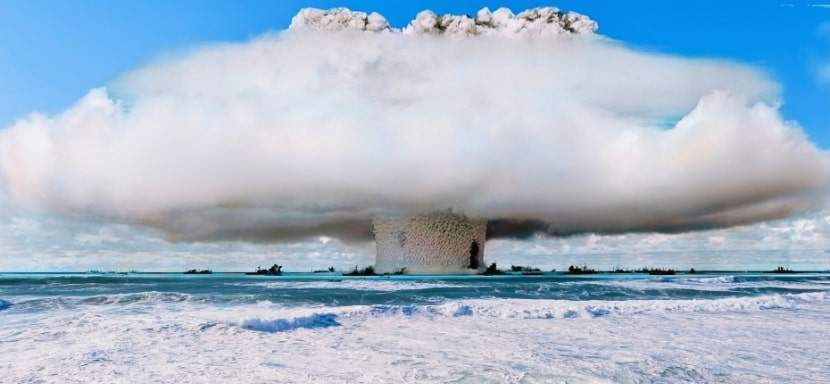
Nuclear Bomb Survival Tips
A nuclear bomb going off in the middle of a heavily populated city is one of the most devastating things you can imagine. The good news is that you could very well survive the blast depending on where you are and what you do during the first hour after a nuclear explosion.
In today’s volatile global landscape, the specter of nuclear explosions remains a sobering reality. The very mention of atomic bombs conjures images of devastation, from the historic destruction witnessed in Hiroshima and Nagasaki to the potential for future calamities in an era where nuclear arsenals continue to exist across the world. Despite the Cold War’s end, the threat of atomic engagement, whether by state actors or non-state entities, persists, making it imperative for individuals and communities to grasp the nature of this threat and the critical importance of preparedness.
Understanding the potential for nuclear explosions is not about succumbing to fear but about empowering oneself with knowledge. By acknowledging the possibility, however remote, individuals can take proactive steps to mitigate the impact on their lives and the lives of those around them. Preparedness starts with education—knowing the basics of what a nuclear explosion entails, its immediate and long-term effects, and the strategies that can significantly increase the chances of survival.
The threat of nuclear war will always be a threat. Knowing a few simple survival tips, they aren’t within a mile of the initial explosion. You may be able to survive the blast.

What is a Nuclear Bomb?
A nuclear bomb is a highly destructive weapon powered by nuclear reactions—fission for atomic bombs, splitting heavy atomic nuclei, and fusion for thermonuclear bombs, merging light nuclei to form heavier ones. These reactions release massive energy, leading to immense blasts, heat, and radiation. Thermonuclear bombs are more powerful than atomic bombs.
The detonation of a nuclear bomb causes a mushroom cloud and extensive immediate and long-term damage, including environmental contamination and health risks like cancer. Atomic weapons are regulated internationally to prevent their spread and use.
The Importance of Being Prepared
The importance of being prepared cannot be overstated. In the event of a nuclear explosion, the difference between panic and calm, confusion and clarity, can hinge on the level of preparedness. This encompasses physical readiness, such as having an emergency kit, a plan of action, and mental preparedness.
Understanding what to do in the aftermath, how to protect oneself and loved ones from radiation, and how to sustain through the recovery period are all facets of being adequately prepared.
As we navigate through these uncertain times, the significance of readiness becomes all the more apparent. Let this introduction serve as a starting point for a deeper exploration into how we can equip ourselves to face the unthinkable as individuals and as a global community. The journey towards preparedness begins with awareness and education, laying the foundation for resilience in the face of potential nuclear threats.
Pay Attention
Following a nuclear explosion, expect widespread panic. Alerts will come through various means: local government texts and emails, audible alarms, and the Emergency Broadcast Alert System, which cuts into TV and radio to provide urgent details and guidance, including messages from the White House.
The experience of the blast varies by proximity to the explosion site; it might feel like an earthquake or be seen as a fireball. However, the mushroom cloud, a delayed visual indicator, appears minutes later, possibly too late for effective sheltering.
Deal With It
Post-detonation, expect a delay in Federal Emergency Management Agency(FEMA) aid, possibly several days, with extensive damage locally and significant national impact. Stay indoors, sealed off for safety against potential looting and unrest. Nationwide panic and speculation about the event’s origins will persist.
Communities with pre-established disaster plans are proven to fare better in survival and recovery following such catastrophic events.
Did You Know?
Removing your outer clothing as soon as possible can remove up to 90% of radioactive material after a nuclear disaster.
Understanding the Threat
Understanding the threat of a nuclear explosion is pivotal. It’s not just about the big boom; the mechanics and aftermath of such an event carry profound implications for our environment, health, and safety.
The Mechanics of a Nuclear Explosion
A nuclear explosion isn’t your average blast. It’s a meticulously orchestrated cataclysm, releasing energy in amounts challenging to fathom. Here’s what you need to know:
- It starts with a chain reaction, where atomic nuclei split (fission) or combine (fusion), releasing colossal energy.
- This energy manifests as an intense heatwave, a blinding flash of light, and a shockwave that can level cities.
Immediate Effects of a Nuclear Bomb
The instant aftermath of a nuclear explosion is, frankly, terrifying. But knowing what to expect can be empowering:
- Blast Wave: A wall of intense pressure spreading outward, capable of demolishing buildings and causing immediate casualties.
- Heat: Temperatures can soar to millions of degrees at the explosion’s center, igniting fires over a wide area.
- Radiation: A burst of initial radiation can cause acute radiation sickness in those within proximity.
Long-term Environmental and Health Impacts
The aftermath of a nuclear explosion isn’t a short-lived horror story; its chapters unfold over years, even decades:
- Radioactive Fallout: Carried by the wind, it can affect regions far from the explosion site, contaminating water, soil, and food.
- Health Consequences: Increased cancer rates, genetic damage, and psychological trauma are long-term shadows cast by the nuclear cloud.
- Environmental Devastation: Ecosystems can be disrupted or destroyed, with recovery spanning generations.
Expert Tips and Strategies
Now, knowing the grim details, how do we prepare? Here are some strategies to mitigate the risks:
- Educate Yourself and Your Community: Knowledge is your first line of defense. Understand the risks and share what you know.
- Emergency Planning: Develop a plan that includes evacuation routes, meeting points, and emergency contacts, and practice it.
- Build an Emergency Kit: Stock up on essentials like water, non-perishable food, a first-aid kit, a flashlight, batteries, and a radio.
- Stay Informed: In a crisis, accurate information is crucial. Know how to access reliable news sources.
- Learn Basic First Aid: Knowing how to treat injuries can be life-saving during any disaster, not just nuclear ones.
Pre-Explosion Preparedness: Laying the Groundwork for Survival
In the face of a threat as formidable as a nuclear explosion, feeling a sense of control might seem out of reach. However, by focusing on pre-explosion preparedness, you’re taking essential steps toward safeguarding yourself and your loved ones. This segment of our journey into surviving nuclear explosions dives into the crucial strategies of designing an emergency plan, assembling an atomic survival kit, and identifying and preparing a shelter.
Let’s break these down into actionable steps you can start today:
Designing an Emergency Plan
- Gather Information: Understand the potential risks in your area. Identify local emergency response plans, including public alert systems and evacuation routes.
- Communication Strategy: Establish a family communication plan. Choose an out-of-town contact everyone can call to check in, ensuring you still have a way to communicate if local networks are overloaded.
- Evacuation Plan: Know when and where to evacuate. Map out multiple routes from your home, workplace, and school to safe locations. Practice these routes with family members.
- Special Needs: Account for family members with special needs, pets, and anyone requiring regular medical care. Ensure you have a plan for their evacuation and well-being.
Assembling a Nuclear Survival Kit
Think of your survival kit as your lifeline. This should include:
- Water and Food: A minimum three-day water supply (one gallon per person daily) and non-perishable, easy-to-prepare food items.
- Radio and Batteries: To stay informed, use a battery-powered or hand-crank radio with extra batteries.
- First Aid Kit: Comprehensive and up-to-date, catering to any specific medical needs of your family.
- Personal Hygiene Items: Sanitizer, soap, and other hygiene products to maintain sanitation.
- Protective Gear: Basic protective clothing and gear, such as dust masks and sturdy shoes.
- Essential Documents: Copies of personal documents (ID, passport, insurance policies) in a waterproof container.
Identifying and Preparing a Shelter
- Choose Your Shelter: The best immediate protection during a nuclear explosion is a basement or the interior part of a middle floor in a multi-story building. Avoid windows.
- Reinforce Your Shelter: If time and resources allow, consider reinforcing your chosen shelter space with materials that can provide additional protection against radiation.
- Shelter Supplies: Stock essentials from your survival kit, blankets, sleeping bags, and additional water and food supplies.
- Practice Drills: Regularly practice going to your shelter on short notice. Familiarity breeds efficiency in actual emergencies.
Immediate Actions to Take During an Atomic Explosion
When the unimaginable happens, and a nuclear explosion becomes a reality, the actions you take in the immediate aftermath can significantly impact your safety and survival. This scenario demands swift, informed decision-making.
Let’s review the essential steps you should take in this dire situation, focusing on recognizing warning signs, finding shelter, and deciding whether to stay put or evacuate.
Recognizing the Warning Signs
- Bright Flash: A blinding light brighter than the sun can be the first indication of a nuclear explosion. Don’t look directly at it to avoid eye damage.
- Blast Wave: Shortly after the flash, a powerful blast wave follows. When you see the flash, immediately seek cover.
- Emergency Alerts: Pay attention to emergency broadcasts on your radio, TV, or smartphone for official information and instructions.
Finding Shelter: The Concept of “Duck and Cover”
- Immediate Action: If you’re caught outside and can’t get to a building, drop to the ground face down, cover your head with your arms, and stay flat until the blast wave passes. This can help protect against flying debris and thermal radiation.
- Indoor Shelter: If indoors, move away from windows to avoid the glass shattered by the blast wave. Basements or the innermost parts of buildings offer the best protection.
Shelter-in-Place vs. Evacuation: Making the Right Choice
- Shelter-in-Place: In many cases, your best option is to stay where you are, especially if you’re already in a building that offers some protection. Seal windows and doors as best you can to minimize radiation exposure.
- Evacuation: If you’re in an area expected to receive high levels of fallout and can evacuate to a safer location, do so only if official guidance supports this action. Remember, evacuating should be based on official directives, not panic.
Bullet Points for Quick Reference:
- Upon seeing a bright flash, immediately seek cover or adopt the “Duck and Cover” position.
- Listen to emergency broadcasts for vital information and instructions.
- Find shelter indoors, away from windows, preferably in basements or inner rooms.
- Decide whether to shelter in place or evacuate based on your location and official recommendations.
Shelter Essentials
Finding and adequately outfitting a shelter can be your lifeline in the shadow of a nuclear explosion. The proper preparation can shield you from immediate dangers and sustain you through the aftermath.
Understanding the essentials of a nuclear shelter, the supplies you should have, and how to stay informed through reliable communication tools and methods.
Characteristics of an Effective Nuclear Shelter
- Thick Walls and Minimal Windows: Ideally, your shelter should have thick, dense walls and as few windows as possible to protect against radiation and blast effects.
- Distance from Ground Zero: The further away from the blast, the better. Basements or underground areas offer the best protection.
- Access to Water and Air: To avoid contaminants, ensure your shelter has access to clean water and, if possible, a way to filter air.
Supplies to Stockpile in Your Shelter
Your shelter should be stocked with essential supplies to support you for at least 72 hours, if not longer. Here’s a quick checklist:
- Non-perishable Food and Water: Aim for a gallon of water per person daily and stock up on canned and dry foods.
- First Aid Kit: Include bandages, antiseptics, prescription medications, and over-the-counter remedies.
- Radiation Detection Devices: Geiger counters or dosimeters can help you monitor radiation levels.
- Essential Tools and Safety Gear: Include a flashlight, batteries, a multi-tool, and protective clothing against radiation exposure.
- Sanitation Supplies: Hygiene is crucial, so stock up on hand sanitizer, soap, and waste disposal bags.
Staying Informed: Communication Tools and Methods
In a nuclear disaster, information is as crucial as water and shelter. Here’s how to stay informed:
- Battery-Powered or Hand-Crank Radio: These can operate even when the power grid is down, allowing you to receive official broadcasts and instructions.
- NOAA Weather Radio: For continuous weather and emergency updates.
- Emergency Alert System (EAS): Pay attention to this national public warning system that can provide life-saving information.
- Social Media and Smartphone Apps: Use them wisely to get updates, but be wary of misinformation. Always cross-check information with official sources.

Post-Explosion Survival Strategies
Surviving the immediate impact of a nuclear explosion is just the beginning.
The aftermath presents its own set of challenges, mainly dealing with fallout, radiation exposure, and ensuring access to safe food and water.
The steps you take in the days and weeks following an explosion can profoundly impact your health and well-being.
Dealing with Fallout: Understanding Radiation Exposure
- Stay Indoors: After a nuclear blast, fallout particles can take hours to fall to the ground. Stay inside your shelter for at least 24 to 48 hours unless local authorities advise otherwise.
- Seal Your Shelter: Close and seal all windows, doors, and ventilation to reduce indoor radiation levels. Use towels or clothes to block any gaps where radioactive particles could enter.
- Monitor Radiation Levels: If you have access to a Geiger counter or other radiation detection devices, use them to monitor radiation levels inside and outside your shelter.
Essential First Aid for Radiation Sickness
- Know the Symptoms: Symptoms of radiation sickness include nausea, vomiting, fatigue, and fever. More severe cases can lead to hair loss, skin burns, and weakened immune function.
- Hydrate and Rest: Drink plenty of fluids to help flush out any ingested radioactive particles and rest as much as possible to support your body’s recovery.
- Seek Medical Attention: As soon as it’s safe to leave your shelter, seek medical attention for anyone showing signs of radiation sickness.
Safe Food and Water Sources
- Pre-Stocked Supplies: Rely on the food and water you’ve stockpiled in your shelter. If they are adequately sealed and stored, these supplies should be free of contamination.
- Avoid Local Sources: Do not consume food or water from outside sources immediately following a nuclear explosion until they’ve been declared safe by authorities.
- Use Sealed Containers: When it’s time to use your stockpiled food and water, ensure that the containers have not been compromised. Inspect them for any signs of damage or contamination.
Bullet Points for Quick Reference:
- Minimize Exposure: Stay sheltered to avoid fallout. Seal off any air entry points to reduce radiation inside.
- Recognize and Treat Radiation Sickness: Watch for symptoms, stay hydrated, and seek medical help when possible.
- Rely on Your Preparations: Use your pre-stocked, uncontaminated food and water supplies.
Navigating the Shadows of Nuclear Winter
In the discourse surrounding nuclear fallout, attention often gravitates towards human-made catalysts such as missile tests led by figures like Kim Jong Un.
However, lurking within the natural world is equally capable of catapulting humanity into a state of emergency: the potential eruption of the Yellowstone supervolcano.
This natural marvel, seated beneath the iconic Yellowstone National Park, harbors a vast magma reservoir poised for an explosive release. The scale of such an event would eclipse the 1980 Mount St. Helens eruption a thousandfold, plunging the United States into the depths of a severe nuclear winter.
Monitoring the Menace: The Challenge of Prediction
The task of monitoring the mood swings of the Yellowstone caldera is fraught with uncertainty. National park geologists are equipped with sophisticated technology capable of detecting the slightest shifts in the volcano’s behavior. Yet, the window for accurate prediction remains narrow, with a mere two-week notice for an imminent eruption. This limitation underscores the precarious nature of anticipating natural disasters, where timing is as critical as the data.
Assessing the Risk: Should We Be Concerned?
Despite a dormancy spanning over 70,000 years—a mere blink in the geological timeline—the Yellowstone volcano’s potential for eruption remains a concern among experts. Geological indicators suggest the magma reservoir is replenishing at a pace that hints at another eruption within the coming centuries. The rapid transition from dormancy to activity highlights the volatile nature of volcanic systems, capable of awakening with little warning.
The projected aftermath of a Yellowstone eruption is stark. The anticipated fatalities exceed 90,000, and the landscape would be transformed by lava. The ripple effects would extend far beyond the immediate area, precipitating a global economic crisis.
Presidential Power
The President has the power to order a nuclear missile attack. It would only take about 5 minutes for him to give the order for missiles to be launched from submarines all over the world and secret underground silos.
Long-Term Survival and Recovery: Building Resilience After a Nuclear Disaster
The journey toward recovery and rebuilding after a nuclear disaster is not just about physical reconstruction; it involves healing psychological wounds and strengthening community bonds.
The aftermath of such a catastrophe can linger for years, making it essential to adopt strategies that promote long-term survival and recovery.
Rebuilding After a Nuclear Disaster
- Assess and Prioritize: Initial efforts should focus on assessing the damage and prioritizing rebuilding critical infrastructure, such as housing, healthcare facilities, and utilities.
- Sustainable Rebuilding: Consider sustainable rebuilding practices that address immediate needs and make communities more resilient to future disasters.
- Government and NGO Support: Leverage support from government programs and non-governmental organizations (NGOs) designed to aid in disaster recovery.
Psychological Effects and Coping Strategies
- Recognize the Impact: Acknowledge that it’s normal to experience a wide range of emotions after a disaster, including anxiety, grief, and depression.
- Seek Professional Help: Don’t hesitate to seek support from mental health professionals. Counseling and therapy can provide vital tools for coping.
- Community Healing: Participate in community support groups. Sharing experiences and emotions can foster a sense of belonging and collective healing.
Community Support and Rebuilding
- Organize Community Meetings: Regular meetings can facilitate communication, allow for the sharing of resources, and foster a sense of solidarity among community members.
- Volunteer: Volunteering to rebuild efforts can not only contribute to the physical reconstruction of your community but also help overcome feelings of helplessness.
- Build Preparedness: Use the experience to improve disaster preparedness plans at the community level, ensuring better resilience against future threats.
Bullet Points for Quick Reference:
- Focus on Infrastructure: Prioritize rebuilding essential services and infrastructure.
- Embrace Sustainability: Consider sustainable practices in the rebuilding process.
- Utilize Available Resources: Seek support from governmental and non-governmental organizations.
- Acknowledge Emotional Toll: Understand and address the psychological impact.
- Foster Community Connections: Engage in community support and volunteer activities.
- Enhance Future Preparedness: Learn from the experience to strengthen community resilience.
The road to recovery after a nuclear disaster is a testament to human resilience. By focusing on both the physical reconstruction and the emotional well-being of individuals and communities, we can overcome the challenges posed by such devastating events.
Remember, rebuilding is not just about bricks and mortar; it’s about restoring hope, healing hearts, and rekindling community spirit. With determination, support, and a forward-looking approach, long-term survival and recovery are not only possible but within reach.
Government and Community Preparedness
In the shadow of the nuclear threat, preparedness transcends individual action, demanding coordinated efforts between governments and communities. This synergy is crucial for enhancing resilience, ensuring effective response, and fostering recovery in the event of a nuclear disaster.
Let’s look at the collective steps we can take to fortify our defenses against the unthinkable.
Role of Government in Nuclear Disaster Preparedness
- Legislation and Policies: Governments are critical in establishing comprehensive disaster management legislation and policies that outline roles, responsibilities, and protocols.
- Funding and Resources: Allocating adequate resources for disaster preparedness, response, and recovery efforts is essential for building robust infrastructure and response capabilities.
- Public Education: Implementing widespread public education campaigns to raise awareness about nuclear risks and preparedness strategies is critical to ensuring community readiness.
Community Response Plans and Drills
- Development of Plans: Communities should collaborate with local authorities to develop tailored response plans that address specific risks and vulnerabilities.
- Regular Drills: Conducting regular community-wide drills simulates the chaos of a natural disaster, helping to refine response strategies and improve coordination.
- Feedback and Improvement: After drills, gathering participant feedback and updating plans ensures continuous improvement and adaptability.
How to Get Involved in Community Preparedness Efforts
- Volunteer with Local Emergency Services: Volunteering with local emergency services can provide you with firsthand experience and knowledge of disaster response.
- Participate in Training Programs: Many communities offer first aid, emergency response, and disaster preparedness training programs. Participation can significantly enhance your skills and readiness.
- Advocate for Preparedness: Become an advocate for preparedness in your community by organizing informational sessions, workshops, and discussions to spread awareness and encourage others to get involved.
Bullet Points for Quick Reference:
- Understand Government’s Role: Familiarize yourself with government policies and initiatives on disaster preparedness.
- Engage in Community Planning: Actively participate in developing and refining community response plans.
- Join Drills and Training: Take part in drills and seek training opportunities to prepare yourself and your community better.
- Advocate and Educate: Promote preparedness through advocacy and education within your community.
Technological and Scientific Advances
As we navigate through the complexities of the modern world, the specter of nuclear threats remains a concern. However, it’s not all doom and gloom.
The silver lining lies in the remarkable strides we’re making in technology and science, particularly in managing nuclear disasters. From innovative detection methods to breakthroughs in medical treatment and disaster management, our arsenal against nuclear threats is stronger than ever.
Innovations in Nuclear Explosion Detection
- Satellite Technology: Cutting-edge satellites equipped with sensors can detect nuclear explosions from space, providing instant alerts and valuable data on the explosion’s location and magnitude.
- Seismic Monitoring Stations: These stations can distinguish between an earthquake’s natural seismic activity and the unique signatures of a nuclear explosion, enhancing early detection capabilities.
- Atmospheric Sampling: Advanced techniques for sampling the atmosphere can detect radioactive particles and gases released by a nuclear blast, offering clues about the explosion’s nature and scale.
Advances in Radiation Sickness Treatment
- Stem Cell Research: Breakthroughs in stem cell therapy offer hope for repairing damage caused by radiation exposure, potentially revolutionizing treatment for radiation sickness.
- New Medications: Researchers are developing new medications designed to protect the body from radiation damage or treat its effects more effectively, reducing the risk of long-term health issues.
- Personalized Medicine: Leveraging genetic testing and personalized medicine approaches can help tailor treatments to individual patients, improving outcomes for those affected by radiation exposure.
Future Prospects in Nuclear Disaster Management
- Artificial Intelligence (AI): AI and machine learning algorithms are being developed to predict the spread of radioactive fallout, optimize evacuation routes, and manage emergency responses more efficiently.
- Robotics: Robots and drones equipped with sensors and cameras can enter hazardous zones to assess damage, search for survivors, and measure radiation levels, reducing risks to human responders.
- Public Education and Preparedness Apps: Mobile apps and online platforms offer new ways to educate the public about nuclear preparedness, providing real-time information, tips, and alerts directly to users’ devices.
Bullet Points for Quick Reference:
- Leverage New Detection Methods: Stay informed about advancements in detection technologies and how they can provide early warnings.
- Explore New Treatments: Keep abreast of new treatments and therapies for radiation exposure that could save lives or mitigate health impacts.
- Embrace Future Technologies: Be open to how AI, robotics, and educational tools can enhance disaster preparedness and response.

Global Efforts to Prevent Nuclear Disasters: A United Stand for Safety and Peace
Across continents, nations come together in a shared commitment to prevent the unthinkable, forging pathways toward a safer, more secure future.
Through international treaties, diplomatic endeavors, and public awareness campaigns, we see the power of unity in addressing the complex challenges of nuclear disarmament and disaster prevention.
International Treaties and Agreements
- Treaty on the Non-Proliferation of Nuclear Weapons (NPT): A cornerstone of global nuclear disarmament efforts, aiming to prevent the spread of atomic weapons and promote peaceful uses of nuclear energy.
- Comprehensive Nuclear-Test-Ban Treaty (CTBT): Though not yet in force, this treaty seeks to ban all nuclear explosions, a significant step toward reducing the nuclear threat.
- Strategic Arms Reduction Treaties (START) are agreements between major nuclear powers to reduce their nuclear arsenals. They showcase the tangible progress that can be achieved through negotiations.
The Role of Diplomacy and Disarmament
- Diplomatic Engagement: Ongoing diplomatic efforts aim to resolve tensions and conflicts that could escalate to nuclear confrontations, emphasizing dialogue over aggression.
- Disarmament Initiatives: Encouraging nuclear-armed states to disarm and reduce their nuclear stockpiles is a continuous process facilitated by international pressure and incentives.
- Peaceful Conflict Resolution: Promoting and supporting mechanisms for peaceful conflict resolution can significantly reduce the risk of nuclear disasters stemming from escalated conflicts.
Public Awareness and Education Campaigns
- Educational Programs: Informing the public about the dangers of nuclear weapons and the importance of disarmament through school curricula and public lectures.
- Social Media Campaigns: Utilizing social media platforms to spread awareness and mobilize support for nuclear disarmament efforts worldwide.
- Engagement in Peace Movements: Encouraging participation in peace movements and advocacy groups can amplify the call for a nuclear-free world, showing that public opinion can influence policy.
Nuclear Explosion Survival FAQs
How far away from a nuclear explosion is safe?
The safety distance from a nuclear explosion depends on several factors, including the bomb’s yield (size), the nature of the terrain, and weather conditions. Generally, an area outside the radius of immediate blast damage (several miles for a large bomb) could be considered safer. However, radioactive fallout can travel hundreds of miles, depending on wind patterns. It’s crucial to seek shelter immediately after an explosion and stay informed through official channels for updates on safe zones.
Can you survive a direct hit from a nuclear bomb?
Survival chances from a direct hit or proximity to the epicenter of a nuclear explosion are meager due to the immense blast pressure, heat, and immediate radiation. The best chance of survival is to be outside the blast radius, in a reinforced shelter, or at a considerable distance from the explosion. Focusing on preparedness and awareness is vital to increase your survival prospects in any nuclear threat scenario.
How long does radiation from a nuclear bomb last?
The duration of radiation can vary. Immediately after a blast, the area will be exposed to intense radiation levels, but the intensity decreases rapidly over time—a phenomenon known as the “7:10 Rule.” For every sevenfold increase in time after the explosion, the radiation level decreases by a factor of ten. However, some radioactive isotopes can remain in the environment for years, making certain areas unsafe without decontamination efforts.
What are the signs of radiation sickness?
Symptoms of radiation sickness can range from mild to severe and include nausea, vomiting, fatigue, and loss of appetite in the early stages, followed by more severe symptoms like skin burns, hair loss, and decreased organ function, depending on exposure levels. It’s imperative to seek medical attention if you suspect radiation exposure, as early treatment can mitigate the severity of the symptoms.
How can I protect my family from nuclear fallout?
Protecting your family from nuclear fallout involves several key steps:
- Stay Informed: Keep up-to-date with reliable news sources and government advisories.
- Seek Shelter: If advised, go to a basement or a central part of a building away from windows. Stay indoors and seal any gaps.
- Have an Emergency Kit Ready: Stockpile essential supplies, including food, water, medications, and a radio for communication.
- Understand Decontamination: Learn how to decontaminate yourself and your family if exposed to fallout, which includes removing and bagging clothing and showering with soap and water.
- Plan for Evacuation: Know when and how to evacuate if required, following official guidance to minimize exposure during transit.
Securing Our Future: The Power of Preparedness Against Nuclear Threats
In conclusion, the journey through understanding how to survive a nuclear bomb underscores the paramount importance of knowledge, preparedness, and global cooperation.
Empowering individuals with the correct information and survival strategies fosters resilience and fortifies communities against the unthinkable.
Beyond individual efforts, the collective commitment to nuclear safety and disaster prevention reflects a shared aspiration for a world where the threat of atomic catastrophes is mitigated through diplomacy, education, and unified action.
Together, we can confidently navigate the complexities of nuclear threats, ensuring a safer, more secure future for all.
Historical Nuclear Bomb Facts
The story of nuclear bombs is a narrative woven through the fabric of modern history, marked by moments of profound impact and global tension. From their inception as theoretical constructs to their dramatic and devastating use in warfare, the development and deployment of nuclear weapons have shaped geopolitical landscapes, spurred intense arms races, and instigated widespread fear and debate about the future of humanity.
- The Trinity Test (1945): The world’s first nuclear explosion occurred on July 16, 1945, in the New Mexico desert as part of the Manhattan Project. Named the “Trinity Test,” this event marked the beginning of the atomic age.
- Hiroshima and Nagasaki (1945): On August 6 and 9, 1945, the United States dropped atomic bombs on the Japanese cities of Hiroshima and Nagasaki, respectively. These bombings led to Japan’s surrender in World War II but also caused unprecedented destruction and loss of life, highlighting the devastating power of nuclear weapons.
- The Cold War and Arms Race: The post-World War II era saw the rapid expansion of nuclear arsenals by the United States and the Soviet Union, marking the beginning of the Cold War. This period was characterized by an arms race and the development of thermonuclear (hydrogen) bombs, which were significantly more powerful than atomic bombs.
- The Tsar Bomba (1961): The Soviet Union tested the most significant nuclear weapon ever detonated, known as the Tsar Bomba, on October 30, 1961. The explosion yielded about 50 megatons of TNT, making it the most powerful human-made explosion in history.
- Nuclear Non-Proliferation Treaty (NPT) (1968): The NPT was signed in 1968 to prevent the spread of atomic weapons and promote disarmament. It represents a global agreement to prevent the increase of nuclear-armed states and to work towards nuclear disarmament.
- Chernobyl Disaster (1986): Although not a weapon, the Chernobyl nuclear power plant disaster in the Soviet Union underscored the dangers of nuclear technology. The accident released massive amounts of radioactive material into the environment, resulting in widespread health and environmental impacts.
- Comprehensive Nuclear-Test-Ban Treaty (CTBT) (1996): Although not yet in force, the CTBT aims to ban all civilian and military nuclear explosions. It represents a significant step towards global disarmament efforts.
- North Korea’s Nuclear Tests: Since 2006, North Korea has conducted several nuclear tests, highlighting ongoing atomic proliferation concerns. These actions have prompted international sanctions and discussions about nuclear security and disarmament.
- The Iran Nuclear Deal (2015): Officially known as the Joint Comprehensive Plan of Action (JCPOA), this agreement between Iran and world powers aimed to limit Iran’s nuclear program in exchange for lifting economic sanctions. It represents a significant diplomatic effort to prevent nuclear proliferation.
- Treaty on the Prohibition of Nuclear Weapons (2017): Adopted by the United Nations, this treaty aims to eliminate nuclear weapons. Although not all nuclear-armed states have signed the treaty, it reflects a growing global movement towards disarmament and a world free of nuclear threats.
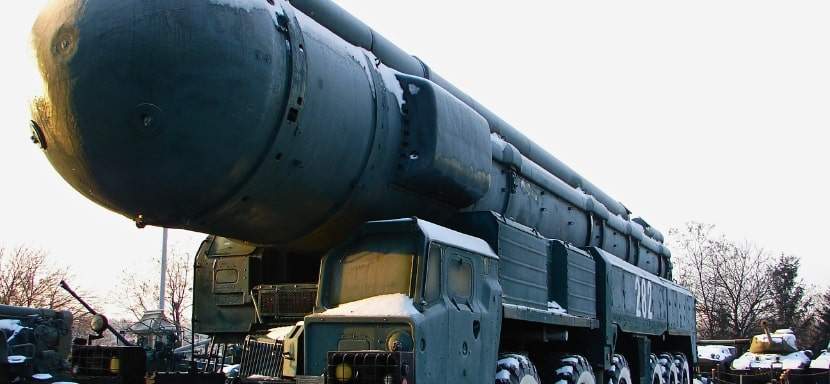
More Doomsday Scenarios
How to Survive a Worldwide Communications Breakdown
Imagine waking up to silence. Your phone doesn’t buzz, your email won’t load, and even your local…
How to Survive a Worldwide Economic Collapse
When we hear “economic collapse,” it conjures images of chaos, scarcity, and instability. While the…
How to Survive a Robot Uprising
Robots: one minute they’re cleaning our homes or delivering pizza, and the next, they’re plotting…
How to Survive a Totalitarian Regime
In a world where governments control everything from curfews to thoughts, knowing how to…
How to Survive an EMP Attack
Imagine waking up to find your entire world plunged into darkness—no electricity, no functioning…
Recent Survival Posts
How to Survive a Layoff
Layoffs feel personal—even when they’re not. One day, you’re responding to Slack messages and forwarding…
How to Survive a Drug Test
I never imagined I’d be so emotionally invested in a paper cup. But there I was, standing under the fluorescent…
How to Survive an Interrogation
If you’ve ever been caught in the crosshairs of an overly enthusiastic mall cop or stared down by someone…
How to Survive a Nightclub Shooting
Nightclubs pulse with life—lights flashing, music pounding, bodies packed tight on the dance floor. It’s a place to…
How to Survive a Bachelor Party
A bachelor party is a delicate mix of celebration, chaos, and questionable decision-making, wrapped…
More Doomsday Survival Scenarios

How to Survive a Worldwide Economic Collapse
When we hear "economic collapse," it conjures images of chaos, scarcity, and instability. It is one of the doomsday scenarios that could happen in reality, and while the thought can be overwhelming, preparing for such a situation doesn't require an underground bunker...

How to Survive a Robot Uprising
Robots: one minute, they’re cleaning our homes or delivering pizza, and the next, they’re plotting global domination. How did we get here? Somewhere between asking Alexa for the weather and teaching AI to write poetry, we gave machines just enough intelligence to turn...
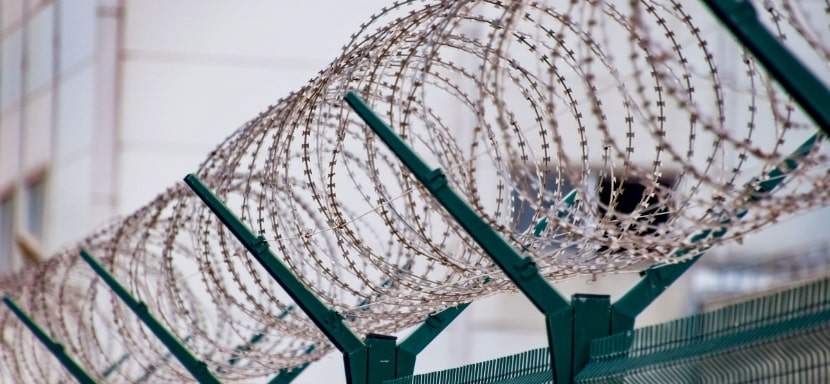
How to Survive a Totalitarian Regime
In a world where governments control everything from curfews to thoughts, knowing how to survive a totalitarian regime is crucial. History shows us that such regimes crush freedoms, spread fear, and twist truth into propaganda. But don't panic—if people survived in...
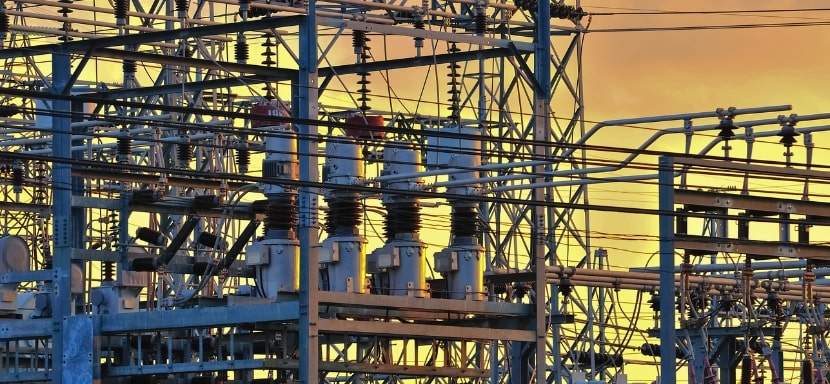
How to Survive an EMP Attack
Imagine waking up to find your entire world plunged into darkness—no electricity, functioning vehicles, or communication. This is the terrifying reality of an EMP (electromagnetic pulse) attack. It can strike without warning, and when it does, it affects more than...

How to Survive a Drone Attack
In today's world, the threat of drone attacks is increasingly becoming a reality. These unmanned aerial vehicles (UAVs) are used for surveillance, military operations, and commercial purposes. However, in the wrong hands, they can become tools of destruction....
More Survival Scenarios

How to Survive a Layoff
When the Floor Falls Out: The Reality of a Layoff Layoffs feel personal—even when they're not. One day, you're responding to Slack messages and forwarding emails. Next, you're staring at your monitor as it logs you out... for good. Whether it's a restructuring, a...

How to Survive a Drug Test
The Cup, The Room, The Truth I never imagined I’d be so emotionally invested in a paper cup. But there I was, standing under the fluorescent hum of a strip-mall clinic, trying to recall the last time I ate a poppy seed bagel. That’s the thing about drug tests—they...

How to Survive an Interrogation
If you've ever been caught in the crosshairs of an overly enthusiastic mall cop or stared down by someone in a uniform with a clipboard and a glare, you’ve felt it — the chilly fingers of interrogation anxiety. And while most of us imagine interrogation scenes as...

How to Survive a Nightclub Shooting
Nightclubs pulse with life—lights flashing, music pounding, bodies packed tight on the dance floor. It’s a place to escape, feel the rhythm, and lose yourself in the crowd. But that same energy can turn deadly in seconds, transforming a night of fun into one of the...

How to Survive a Bachelor Party
A bachelor party is a delicate mix of celebration, chaos, and questionable decision-making, wrapped in the noble intention of sending the groom off into married life with a night he’ll (hopefully) remember. It’s a ritual as old as time—well, as old as men deciding...

How to Survive Your First Time at the Gym
Walking into a gym for the first time can feel like stepping into an alien world. The machines hum with purpose, the regulars move confidently, and you’re left standing there, clutching your water bottle, wondering whether you’re in the right place—or on the right...

How to Survive a Worldwide Communications Breakdown
Imagine waking up to silence. Your phone doesn’t buzz, your email won’t load, and even your local radio station crackles with static. A worldwide communications breakdown has hit. What next? For many, this doomsday scenario may sound like the opening lines of a...
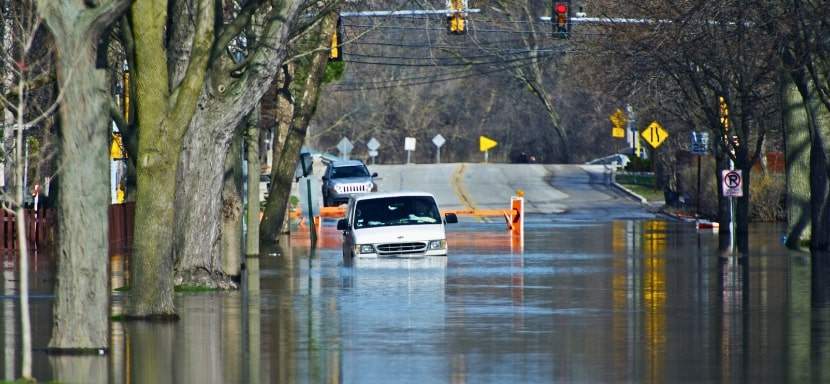
How to Survive a Flash Flood While Driving
Surviving a flash flood while driving requires quick thinking, calmness, and a solid plan to ensure your safety. Preparation can make all the difference between a close call and a catastrophe in emergencies like this. This guide provides practical advice to protect...

How to Build an Emergency Kit
Emergencies don’t knock politely at the door. They barge in, uninvited, like a distant relative with a penchant for drama, turning your world upside down without warning. Whether it’s a power outage, a natural disaster, or an unexpected evacuation, the key to staying...

How to Protect Yourself From Insects in the Wild
There’s nothing like being out in the wild—birdsong echoing through the trees, the fresh scent of earth, and a deep sense of peace that makes you think, “Ah, this is what life is about.” But then comes the buzzing. Mosquitoes, ticks, and flies swoop in like uninvited...
